How do horses sleep?
By: Pablo Imberti Posted: 15/07/2022
There are few vital things we literally cannot live without. One is oxygen. Another, food and water. And then, there’s sleep.
Sleep is essential for basic survival. This important biological process has shown to impact individuals' optimal physical and cognitive performance.
This is true for both humans and animals.

As regards horses, specifically, have you ever wondered how horses sleep?
You might have seen a horse lying down on the ground and wondered how they normally sleep and if they dream when they sleep.
In this article, we will address all these issues, always based on the scientific studies that have been conducted on horses’ sleep patterns.
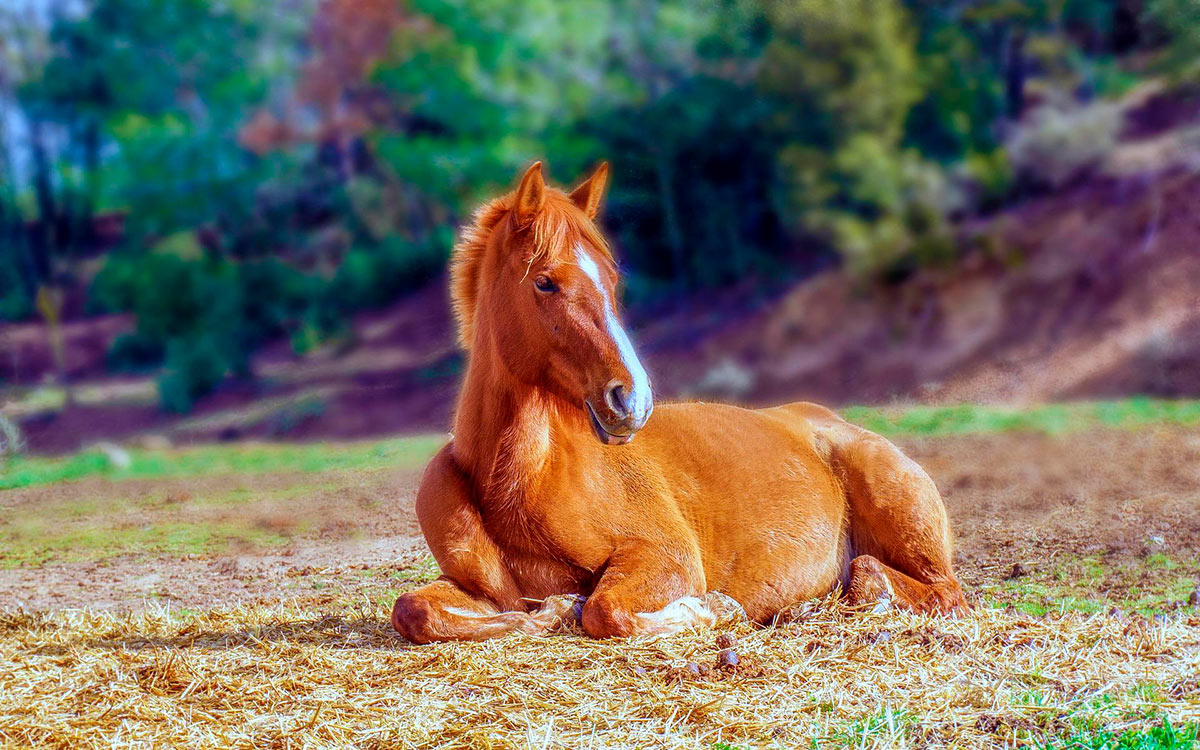
Stages of sleep in horses
The first thing we need to know is whether, like humans, horses experience different stages of sleep.
When studying sleep in horses, one uses the same methodology that is used with humans. Three parameters are measured: brain activity, eye movement and muscle tension.
According to these studies, it has been confirmed that horses also experience two sleep stages:
- Slow wave sleep (Non-REM) is characterized by slow brain waves and has 4 phases, ranging from numbness and light sleep, where the horse can wake up to any noise and there still remains a record of muscular activity, to the deep sleep phase, where brain activity is reduced and muscle tone increases. This is the phase where a body truly rests.
- Fast wave sleep (REM) is the opposite, the skeletal muscles completely relax and brain activity increases. It is thought that this phase serves to consolidate memories and learning that occurred during the day.
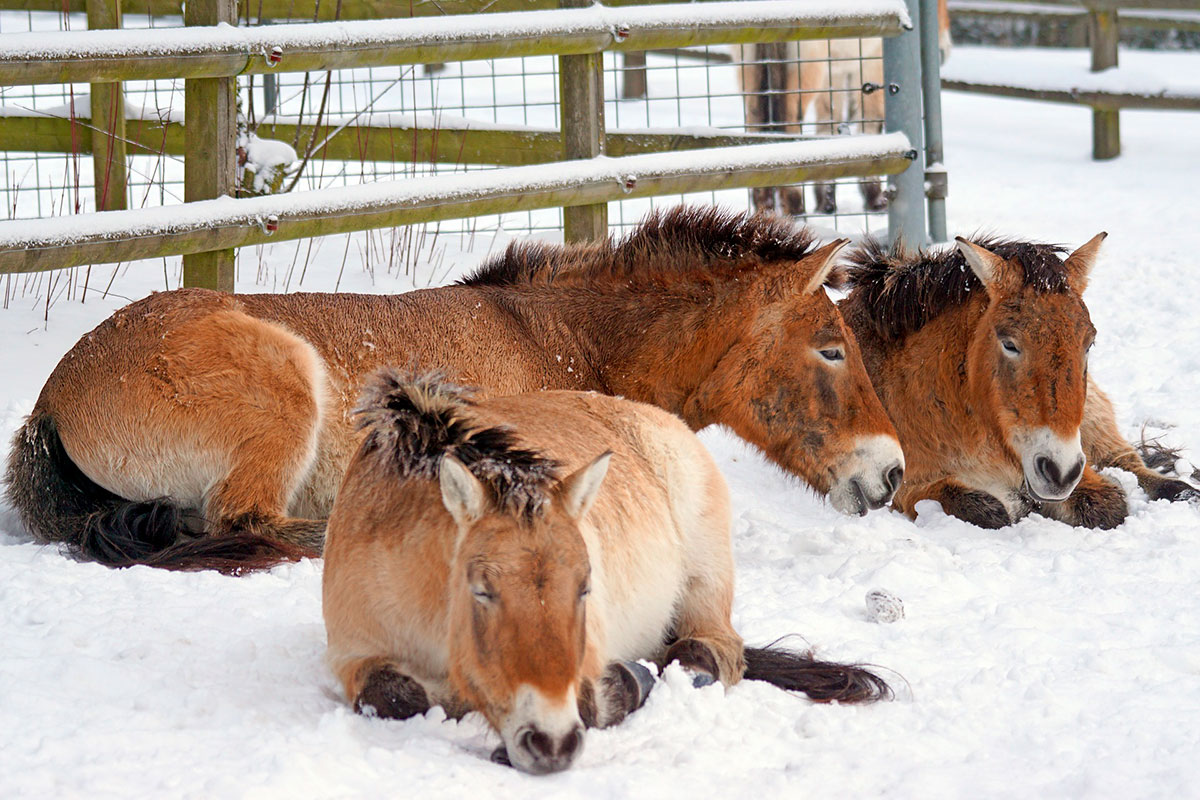
Would you like to be part of a group with an equestrian soul?
Join the Ampascachi Community. Obtain exclusive benefits for your holidays.
We tell you how to start, train and take care of your horse.
Interviews with direct providers of riding tours around the world.
Opinions of outstanding equine scientists and personalities in the equestrian sport world.
When and how do horses sleep?
Now that we know that horses have different sleep stages and that can even dream, let's find out if it is true that they always sleep standing up.
This popular belief is wrong. Horses sleep standing up and also lying down.
However, they can only enter REM phase when they sleep lying down.
Then, why don't horses always sleep lying down?
The first thing we must understand is that horses do not sleep for long periods or preferably at night as we do. It’s just the opposite.
Several short periods of sleep make up their overall sleep time, in which they reach deep stages of sleep.
In addition, they do not need to sleep as many hours as humans. In most cases, approximately 5-7 hours each day is spent resting, and depending on the age, some horses may need fewer hours.

But back to the question of standing-up sleep.
One of the most relevant reasons is that horses, like other animals that sleep on their feet, are prey animals. They have had to survive in a predator-full environment and always be aware of their surroundings.
They will only sleep lying down in quiet moments and in places where they feel totally safe from danger. Also some horses sleep lying down when other horses stay vigilant.
But this is no problem for horses, which have developed a mechanism whereby they exert the least possible amount of energy and avoid fatigue while standing. Horses have the stay apparatus, a series of muscles, ligaments and tendons in the pelvic limb, that stabilize the limb in a standing position.
Thanks to the stay apparatus, the patella is locked over the trochlear ridge of the femur, an action that is known as patellar locking. When it occurs allows, not only the stifle (knee), but also the hock (tarsal) joints can be stabilized.
The horse can activate this locking system while awake.
At that time, the horse lowers its head, all the muscles relax and the neck is practically in line with the spine. This enables the horse to rest its caudal body weight on the locked stifle joint, using minimal muscular energy. Then the horse can relax the opposite limb, resting exclusively on the front edge of the hoof.
The animal can periodically shift its weight to rest a different leg and thus all limbs are able to be individually rested, reducing overall wear and tear.
This structure is also found in other large animals, such as giraffe, zebra, elephant and camel that have a stay apparatus.
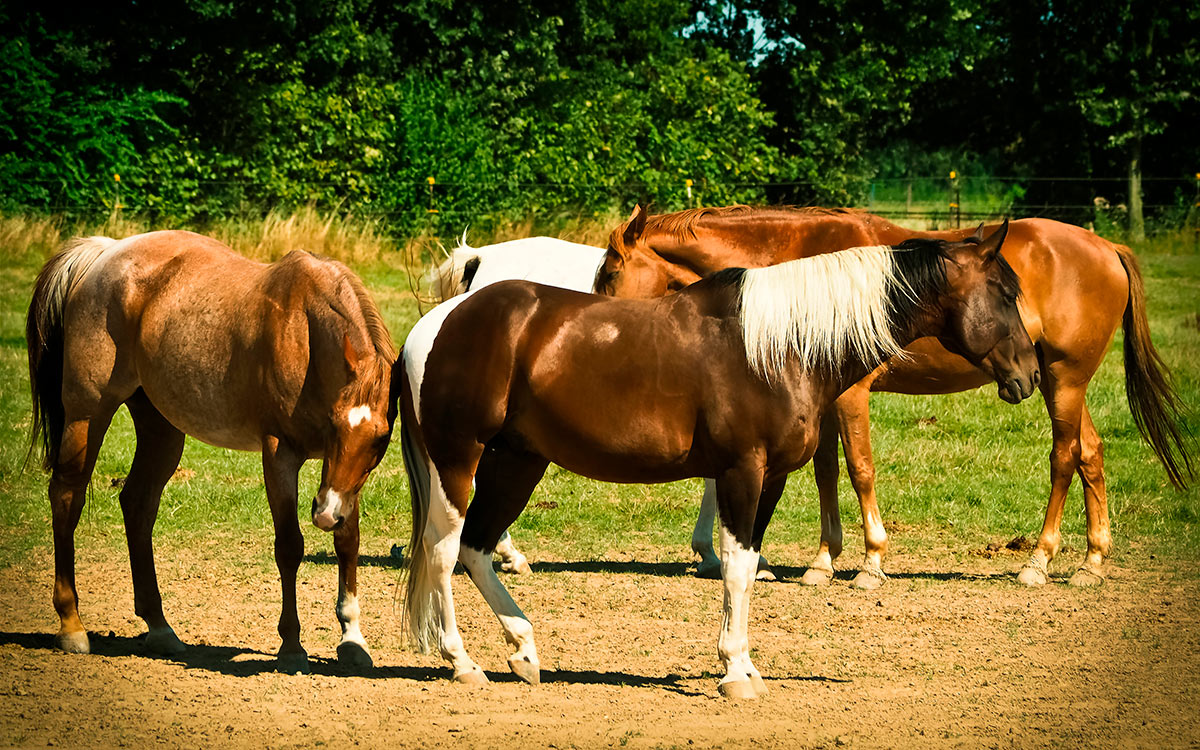
Horses and dreaming
And how do we know if a horse is dreaming?
We said that horses dream only during REM sleep
In that stage of deep sleep, horses move their eyes and sometimes their legs. This leads us to believe that they dream of recent daily experiences.
This sleep stage plays a fundamental role in learning and memory consolidation, and it is essential for brain development in young animals.
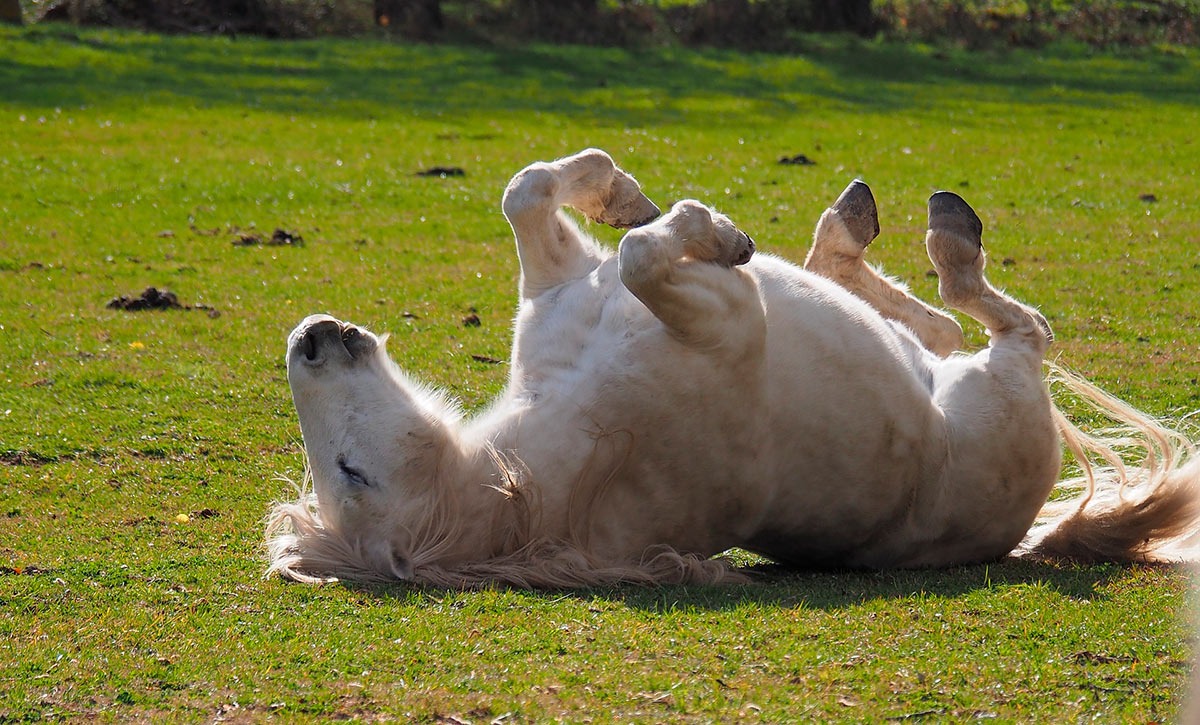
Subscribe to the Ampascachi Community and obtain benefits and exclusive content. Furthermore, we offer free advice on horses and equestrian tourism.
Sleep disorders and preventing them
Sleep helps horses save energy and provides recovery, and it’s closely related to their weight and other health aspects. We must allow our horses to rest properly.
Sleep disorders and sleep deprivation can seriously compromise horses' physical activity and, worse, their quality of life.
According to Dr. Bertone, professor of Equine Medicine at Western University of Health Sciences, College of Veterinary Medicine, many causes contribute to sleep disorders in horses: pain or physical discomfort, environmental insecurity, monotony or aggression problems.
Environmental insecurity appears to be the most common cause of sleep disorders in horses. Environmental issues include changes in stall size, loss of other horses or changes in lighting and weather.
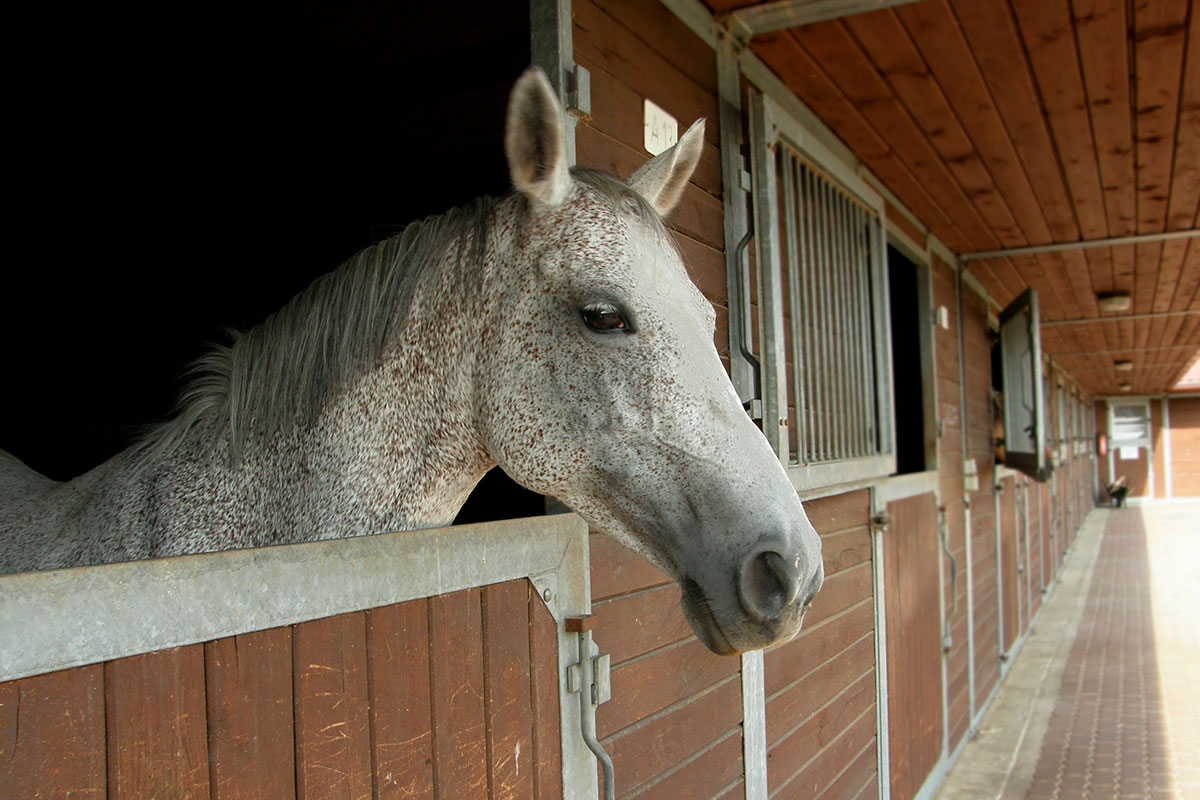
These are some of the recommendations to improve your horse’s wellbeing:
- Horse stall: Whether they sleep standing up or lying down, the stall must have a standard size that is not less than 3.5m by 3m and with a height of 2.3 meters or more. Straw is recommended for stall bedding, but since horses may eat it, sometimes other materials are used to prevent them from health problems in the digestive tract.
- Rest area: It must have the adequate temperature and be free of noise and lights.
- Contact with nature and freedom of movement: We must avoid keeping the horse stalled for long periods. We should allow them to roam freely and graze in an open field.
- Make them feel safe: avoid keeping your horse in complete isolation. They can share the stall with other horses, as long as they get along well without scuffles.
- Observe how he gets along with other horses: watch out for signals of aggression within a herd. If that happens, bringing a strong mare into the group can help to reduce feelings of anxiety and irritability.
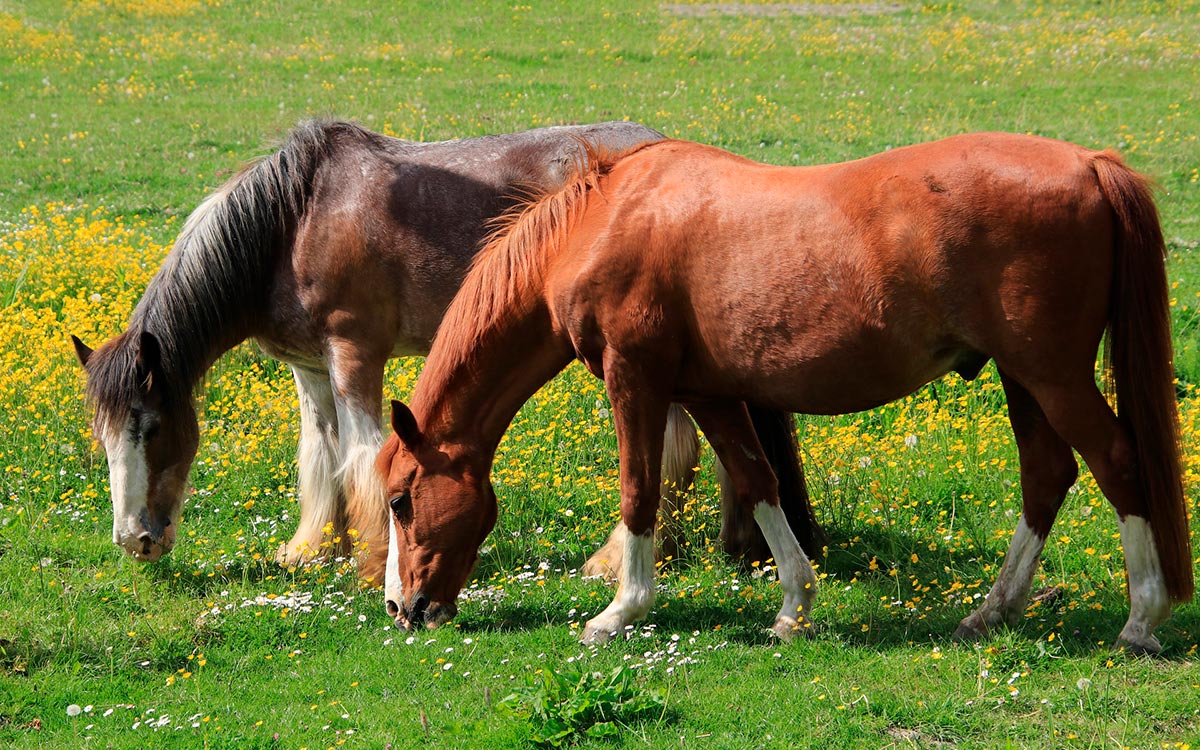
Some curious facts about horses’ resting behaviour
Have you ever seen your horse yawn?
Yes, horses yawn, but that’s not a sign of boredom or sleepiness like in humans.
For them, yawning is a sign of stress or frustration. For example, horses may yawn because the stall is too small and they need more space, or because they are close to meal times and they are anxiously anticipating their hay or grain.
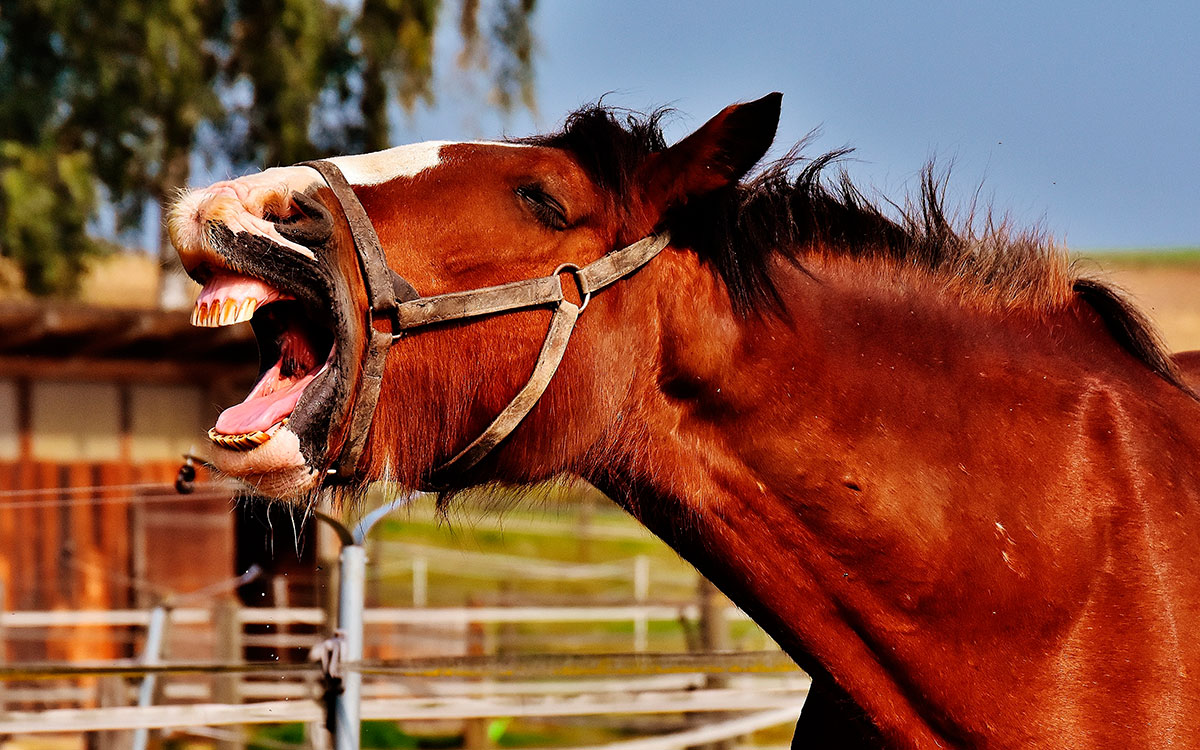
Do all horses need the same amount of sleep?
As we have said, they don’t always sleep the same number of hours. The amount of sleep a horse needs varies depending on its age or environmental circumstances. For example, they sleep more in summer. And foals can sleep up to 12 hours a day.

Do horses dream in colours?
That’s a tricky question. We know that horses cannot see colours like we do, but they do see them.
Horses have dichromatic vision, meaning they can see colours along a continuous range from blue to green.
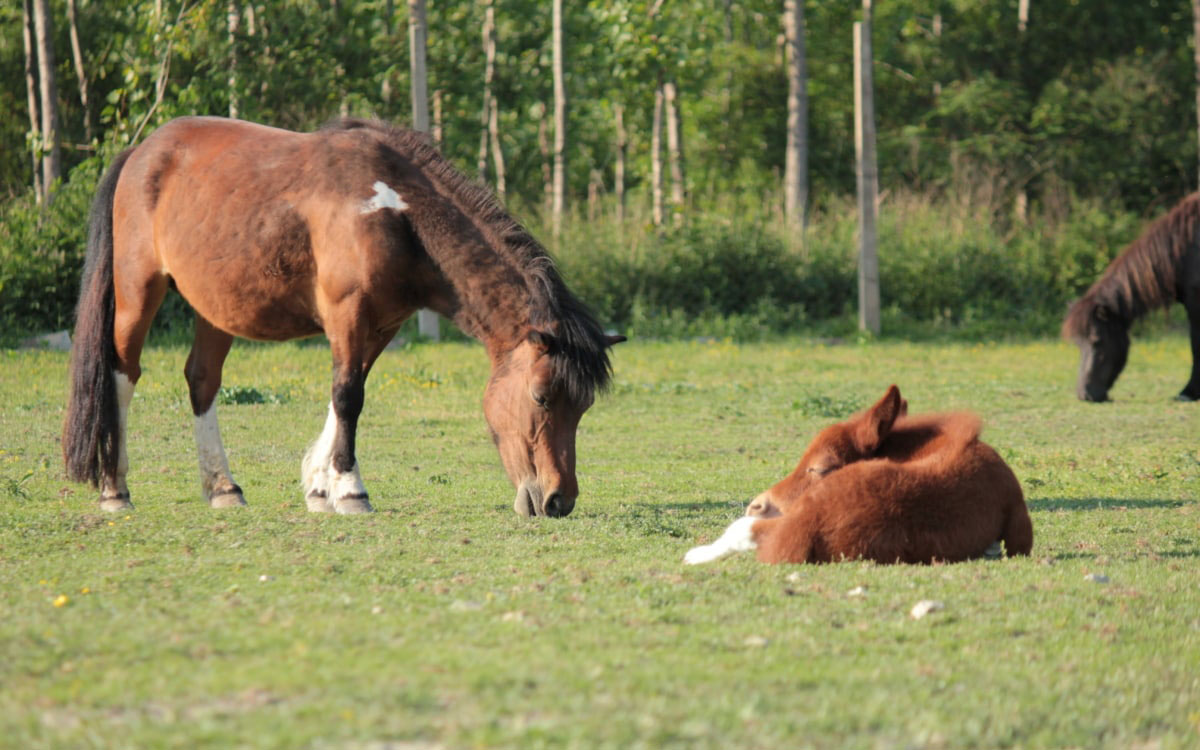
In brief
The health of our beloved horses depends, among other things, on good sleeping habits.
Providing horses with a suitable place to sleep, especially when they need to lie down, is vital for their wellbeing.
It has been shown that when horses sleep well and there are no sleep disorders, they gain weight, have a relaxed attitude and become less aggressive towards other horses.
Therefore, anyone who is in charge of one or more horses must be very clear about all these concepts and put them into practice.
If necessary, we should seek the advice of an expert who can teach us the guidelines to improve our horse’s wellbeing.
Would you like to delve deeper into the world of horse training?
Download our free guide on Horse training step by step. There we tell you everything we have learned about horse training in more than 25 years of experience.
~
THIS COULD ALSO BE INTERESTING

Dr. Paul McGreevy: specialist in horse behaviour and welfare
We have interviewed Dr. McGreevy to gain insight into equine behaviour, horse welfare and the application of learning theory in equitation science.

Diverse landscapes for horseback riding in Argentina
Argentina is waiting for you to ride in regions like Patagonia, the provinces of Cordoba, Salta and Jujuy and to visit the Iguazu Falls or cross the Andes.

How to understand the welfare of horses
Discover the evolution and implementation of the 5 domains model for animal welfare applied to equids. Assess the well-being of your horse based on his physical and mental health.
~
WHAT IS YOUR OPINION? LEAVE A COMMENT
Planning your horse riding holidays?
Join the Ampascachi Community. You will get exclusive advantages and guidance for your next horse riding holiday.


 German
German French
French Spanish
Spanish